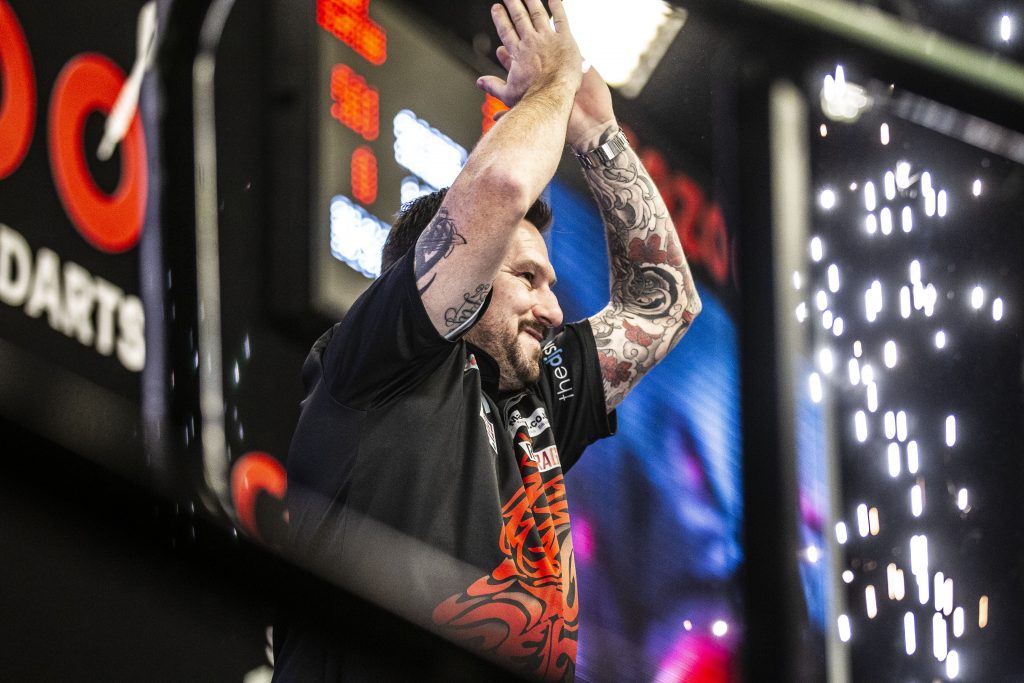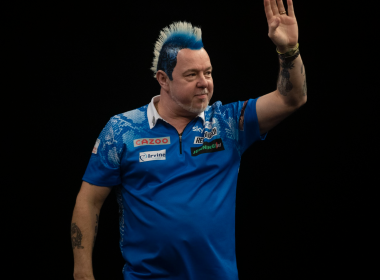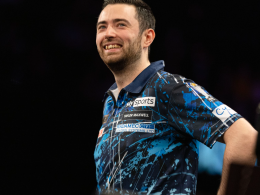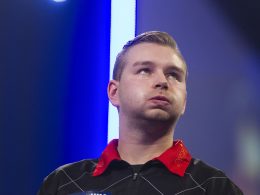What’s behind the Darts Orakel Power Rankings (aka the Faria Darting Index) ?

In the Summer of 2016, I was keen to know who the best dart players in the world were. My observation was that the official Order of Merit wasn’t representative of what the players seemed to be producing at that moment in time. I also wanted to know how the BDO players (the likes of Durrant, Mitchell and Waites) compared to the PDC – a debate that always seemed divisive among fans. Searching the internet, I found nothing to provide what I considered to be a fair reflection of the darts pecking order, and therefore who would be more likely to start favourite against who, hypothetically, if they played tomorrow. As a Mathematics student at the University of Amsterdam and a hardcore darts enthusiast, I reckoned I could come up with something that would serve as an accurate ranking system based on current form – one that would adjust itself automatically when processing the latest results of matches through a series of formulas.
I did some research into other ranking systems and stumbled across various ones before studying the FIDE Elo system (“Elo”). Elo works perfectly for chess, and like darts, chess is a one-on-one, individual contest. I first tried to implement the same formulas in darts – an experiment that failed, with the output being a set of rankings that looked nowhere close to the gut feel I had of the power dynamics in the sport at the time. That said, some of the properties of Elo still seemed suitable so I decided to persist with them. They were integrated into what became the Faria Darting Index (FDI) and have remained a part of it until today.
Using the difference in rating between two players, Elo assumes a most likely outcome when you put them against each other and adjusts both players’ rating based on the difference between that most likely outcome and the actual outcome of the match. In chess there are three possible outcomes: Player 1 wins, Player 2 wins, or there is a draw. A best-of-11 legs match in darts has twelve possible outcomes and therefore can tell us much more about the gap in quality of the players. Trying to quantify that gap was the foundation for FDI and the first formulas have evolved from there. In 2016 I began to process every match result, and retrospectively processed all results I could find going right back to the year 2000.
Between 2016 and 2021, the system gradually began to account for more variables. This involved additions like the number of days since the last match played. A bit like assessing the chances of racehorses, it is helpful to know how recent a snippet of form is and the more recent, the more weight it holds. Processing results through the model generates ratings that serve as a carrier of a players’ current form relative to their peers in the world of darts. The higher a players’ rating, the better he is playing in comparison to the field, at that time.
A question I often get asked is whether there are any symbolic levels within the ratings, or points at which they signify a breakthrough. Another is, are they comparable with ratings of the past?

Relative v Absolute Performance
It is important to recognise that FDI is a system of relative rather than absolute performance, due to the very nature of players being benchmarked against their opponents at that particular time. So, whilst we can compare FDI ratings of today to those of yesteryear to tell us about respective levels of dominance, there is no measure of the overall standard of the field during any given period. This makes present-to-past FDI comparisons less meaningful the further they are apart, and more meaningful the closer they are. An FDI rating for Gerwyn Price today against Michael van Gerwen in early 2020 would be a useful comparison of their absolute performance levels at those points in time, because the general standard of competition won’t have altered much. On the other hand, comparing today’s Jonny Clayton with Phil Taylor’s rating when ripping up the sport in the early 2000s, is unlikely to tell us that much about the standard of play of the two players being compared (this is where metrics like averages, or the new Ordinal Checkout Efficiency (OChE) rating devised by Christopher Kempf, are more meaningful).
A player with a 1750+ rating in FDI is consistently playing at a top 32 level, whist a player with a rating of 1800+ is consistently going to be in and around the top 12. The average rating on the PDC Pro Tour is 1690.
Using all results since 2000 to simulate the evolution of the rankings, seven players have been at the summit: Taylor, van Barneveld, van Gerwen, Wright, Price, De Sousa and Clayton. Four of those were in the last twelve months – a sure sign of the strength in depth of talent increasing.
The highest FDI rating belongs to Phil Taylor, who had a 2011 rating (backdated) of 2124. Michael van Gerwen later hit a personal high of 2048. At the time of writing, van Gerwen is again Number 1 in the rankings with a rating of 1889 – 159 points away from his peak. Assuming the standard of the game has not moved tectonically since van Gerwen’s 2048 rating, this means there is about as much difference between the van Gerwen of 2016 and the van Gerwen of today, as there is between the van Gerwen of today and the 44th best player in the world today on form, which is Keane Barry.
How is FDI linked to Darts Orakel Probabilities?
The ratings can be used to determine percentage chances of different outcomes occurring. A player up against someone with a rating of 100 less than them has a 68.7% chance of winning a best-of-11 legs encounter. The reliability of those percentage chances is obviously dependent upon the accuracy of the ratings in the first place, which overtime have produced a win/lose predictive success between match-ups across various codes in darts, of around 70%. The probabilities we can generate allow us to simulate matches, events, and even whole seasons. In 2020, 2021 and 2022, projected cut-off points for the first and second phases of Q-School were produced with a high level of accuracy. Similarly, in the 2021 PDC Premier League, the cut-off for the playoffs was forecasted exactly, despite that number of points only being the actual number of points needed once before in recent Premier League campaigns. This is something that could arguably be helpful to players – to know what they should aim for in terms of points at the start of certain events. Our intention is to write season-long simulations and have these calculated by a ‘supercomputer’ to give players a projected cut-off for every event on the darting calendar for both the PDC and WDF. Watch this space!
The FDI ratings can be applicable to all levels of the game, providing we have access to match results. The lowest rating in the database belongs to a player from Lithuania, with a rating of 882. According to this, they would win one in every 120,000 best-of-11 leg matches against Michael van Gerwen. Amateurs, county, and pub players can all have their own FDI rating and see how they compare to the players they watch on our TV screens. Their ratings can also be used to calculate the chances of coming through Q-School – ideal for those wanting a fair assessment of where their game is and are maybe weighing up whether it is time to make the investment. It goes without saying that the more results we have, the more accurate the ratings will be. In 2022, we teamed up with the Amateur Darts Circuit (ADC) and Darts Atlas to integrate every match played on the ADC, thereby enabling everybody who plays ADC events to have an FDI rating.
You can view the complete list of players and their ratings, at all levels of the game, via https://dartsorakel.com/fdi
With the seesawing of the Number 1 spot in the last two years and more emergent players starting to make their mark at the sharp end (Luke Humphries and Damon Heta have both reached #3 this year), will we see an eighth name on top of FDI by the end of 2022?
Darts has never been more exciting!
Lendel Faria











